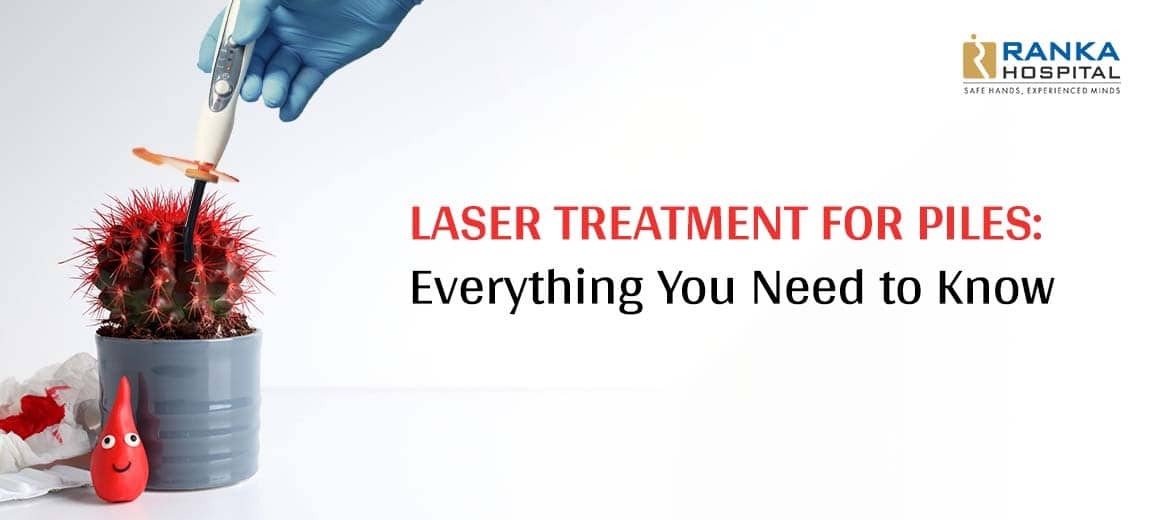Laser Treatment for Piles: Everything You Need to Know
Piles is a painful condition that affects millions worldwide. Medically known hemorrhoids, piles are swollen blood vessels in the anal canal. People suffering from piles experience pain, bleeding, and discomfort during bowel movements. Some common causes include obesity, constipation that leads to straining, stress, and lack of exercise.
Piles can be treated through various treatments. One of them is the laser treatment. It is an effective and modern approach to treating piles. However, laser piles treatment has various aspects associated with it. So, if you’ve been looking to undergo laser treatment for piles, reading the below can help you a lot about it.
What is Laser Treatment for Piles?
During the treatment, doctors use a high-intensity laser beam to target and shrink the swollen blood vessels in the rectum and anus. Doing so helps relieve the symptoms of piles and fosters quicker healing.
Laser Treatment for Piles – Techniques Used
The two principal techniques involved in piles laser treatment include the following.
- Laser Coagulation: Surgeons use a laser to cauterize the hemorrhoidal tissue. It helps reduce the tissue’s size and seals off the blood vessels. Additionally, it helps reduce bleeding, itching, and pain associated with piles.
- Laser Hemorrhoidoplasty: Laser energy removes excess tissue and reshapes the hemorrhoids. Laser Hemorrhoidoplasty helps reduce prolapse and discomfort.
Laser Treatment for Piles – Pros and Cons
Let’s look at some advantages and disadvantages associated with piles laser treatment. The pros and cons can vary with the patient undergoing the treatment, their response to the treatment, and their overall health condition. Hence, patients looking to undergo the treatment should discuss the below with their doctor to make an informed decision and prepare for it appropriately.
Advantages
- Minimal bleeding during and after the treatment
- Anesthesia is local
- Precise targeting of affected tissue, minimizing surrounding tissue damage
- Reduced post-surgery pain and discomfort in some individuals
- No open wounds
- Done as an outpatient procedure, eliminating the need to stay in the hospital
- Recovery is quicker than conventional piles treatment
- Fewer follow-are required
Disadvantages
- The cost is higher than conventional piles treatment
- Recurrence of piles is a possibility
- Possibility of complications like anal fissures, anal strictures, infection, etc.
- Scarce availability due to the level of expertise involved
- The effectiveness may vary with the person and their response to the treatment
Laser Treatment for Piles – Success Rate
Laser surgery for piles is usually more successful than conventional piles treatment. However, one should note that the success rate depends on various factors like the patient’s response to the treatment, the surgery’s effectiveness, the doctor’s expertise, case-related complications, and more. You must discuss the treatment’s potential for success in your case before undergoing the treatment.
Laser Treatment for Piles – Resumption of Activities
Usually, patients can resume normal activities in one to three days after the treatment. Nevertheless, you must seek specific consultation to know how early you might begin your regular activities after the treatment.
Laser Treatment for Piles – Cost in India
The cost depends on numerous factors, including the hospital’s location, doctor’s expertise and success rate, experience treating piles, infrastructure used, post-treatment follow-ups, laser technology type, case complications, and additional services. You should discuss the cost of laser treatment for piles with your doctor to plan your finances.
Do you have any more questions concerning laser treatment for piles? Visit Ranka Hospital and get all your questions answered. Call us at +91 – 20 – 24261530 to schedule an appointment with specialist piles doctors in Pune.

